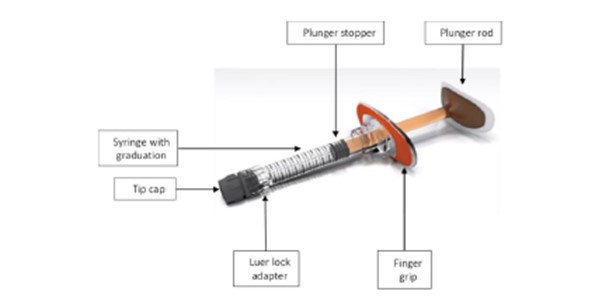RHA 3 Dermal Filler – P170002/S030
This is a brief overview of information related to FDA’s approval to market this product. See the links below to the Summary of Safety and Effectiveness Data (SSED) and product labeling for more complete information on this product, its indications for use, and the basis for FDA’s approval.
Product Name: RHA 3 dermal filler
PMA Applicant: Teoxane SA
Address:
Les Charmilles
Rue de Lyon, 105
CH 1203, Geneva
SWITZERLAND
Approval Date: October 27, 2023
Approval Letter: Approval Order
What is it?
RHA 3 is a gel implant or dermal filler that is injected in specific areas of facial tissue to add definition or reduce the appearance of lines and wrinkles. It consists of the chemical hyaluronic acid, 1,4-butanediol diglycidyl ether (BDDE), and 0.3% of the drug lidocaine to reduce pain on injection.
This approval expands the use of this product to include injections into the lips to augment the fullness of the lips.
How does it work?
RHA 3 is injected by a doctor into the skin of the upper and lower lips, edges of the lips (vermillion borders), and corners of the mouth where the upper and lower lips meet (oral commissures).
When is it used?
This new approval establishes the use of RHA 3 to achieve lip augmentation and lip fullness in adults aged 22 or older.
What will it accomplish?
RHA 3 will temporarily increase the volume of your lips. Based on a clinical study, it showed visible effects in around 78% of patients after 12 weeks, decreasing to 61% of patients after 36 weeks, and 48% of patients after one year. Most patients (95%) experienced common reactions at the injection site, including bruising, firmness, swelling, pain, tenderness, redness, lumps/bumps, skin color changes, and itching.
When should it not be used?
RHA 3 is not for patients who have a history of:
- Severe allergic reactions (anaphylaxis) or history or presence of multiple severe allergies. An injection of RHA 3 may result in an allergic reaction.
- Allergic reactions to the material (from Streptococcus equi) used to make the HA in RHA. An injection of RHA 3 may result in an allergic reaction.
- Allergic reactions to lidocaine or other similar substances used to reduce pain. An injection of RHA 3 may result in an allergic reaction.
- Bleeding disorders. Any injection, including RHA 3 and other dermal fillers, may result in a higher risk of bruising or bleeding in the treated area.
Additional information (including warnings, precautions, and adverse events):
- Summary of Safety and Effectiveness Data (SSED)
- Labeling - Indications For Use
- Labeling 2 - Patient Information
- PMA Database entry

